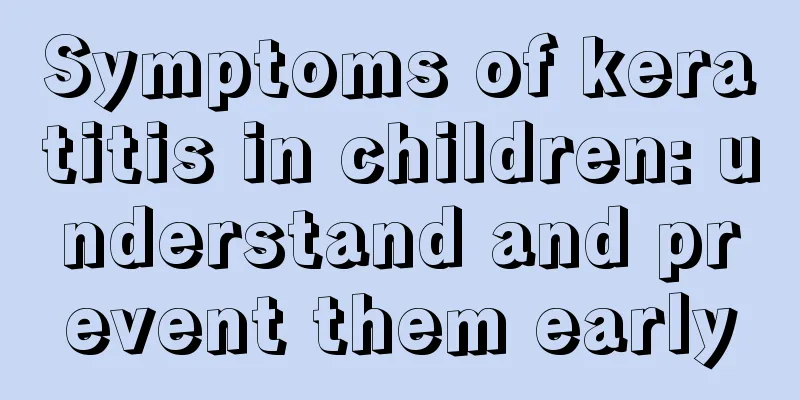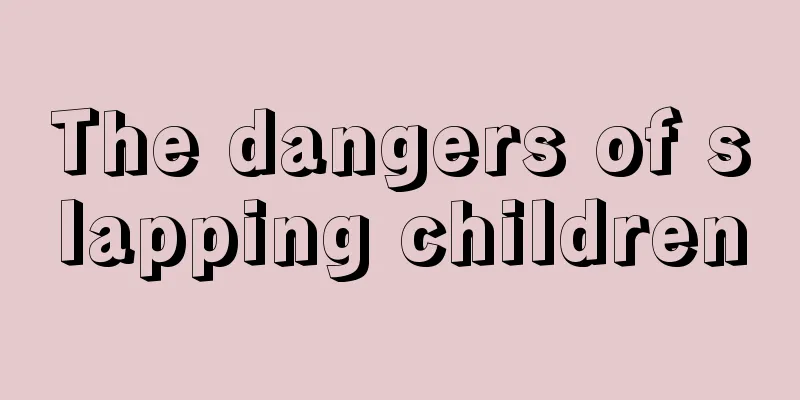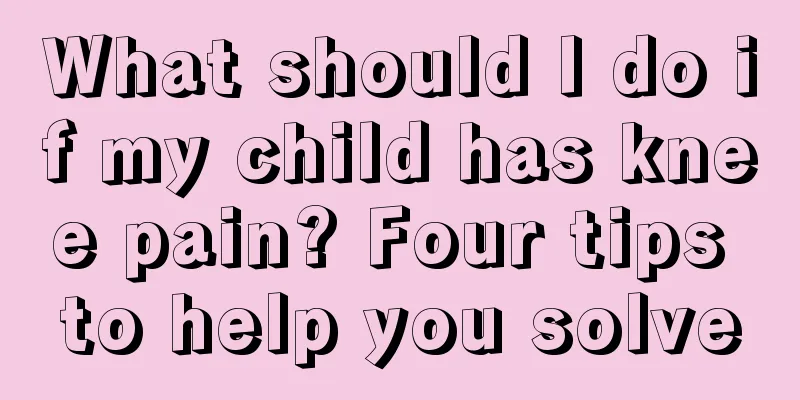Symptoms of keratitis in children: understand and prevent them early

|
For childhood keratitis, the best coping strategy is to do a good job of prevention in daily life. The reason why many parents do not take preventive measures is because they do not understand the symptoms of the disease and the harm it brings to their children. Therefore, the following is a detailed introduction. 1. For children suffering from keratitis, since the corneal epithelium contains abundant sensory nerve endings, they are particularly sensitive to symptoms. Pain, strong foreign body sensation, fear of bright light, tears and inability to open eyes are common symptoms. Sometimes children will feel that their vision has deteriorated and they cannot see things clearly. 2. Generally speaking, keratitis is often accompanied by many other symptoms, such as congestion, redness, and edema around the cornea. The most serious sequelae are corneal ulcers and corneal perforations, which allow microorganisms to invade the eye, causing endophthalmitis and blindness. Therefore, parents of children with the disease have to be careful. With the exception of paralytic keratitis, most children with keratitis have severe inflammatory symptoms such as pain, photophobia, tearing, and blepharospasm. This is because the trigeminal nerve endings in the cornea are stimulated by inflammation, causing reflex contraction of the orbicularis oculi muscle and excessive tear secretion. The cornea is an avascular tissue, but the adjacent areas are rich in blood vessels. When inflammation affects the adjacent tissues, there will be congestion and inflammatory exudate. Therefore, children with keratitis not only have ciliary congestion, but also iris congestion. The latter manifests as iris discoloration and pupil constriction. In severely affected children, the conjunctiva and even the eyelids may become swollen. Corneal infiltration occurs when leukocytes migrate to the corneal lesions due to limbal hyperemia. When corneal inflammation reaches the regression stage, the clinical irritation symptoms are greatly alleviated. 4. Corneal inflammation will inevitably affect vision to a greater or lesser extent, especially when the inflammation invades the pupil area, it is more serious. The corneal scar formed after the ulcer heals not only blocks the light from entering the eye, but also changes the curvature and refractive power of the corneal surface, making it impossible for objects to be focused on the retina to form a clear image, thereby reducing vision. The extent of vision loss depends entirely on the location of the scar. If it is located in the center of the cornea, even if the scar is small, it will have a great impact on vision. |
<<: Diet therapy for children's cough, these seven recipes are very valuable
Recommend
Seven-month-old baby's sleep time
A seven-month-old baby is in the development peri...
What to do if abo hemolysis occurs in newborns
What to do if neonatal ABO hemolytic disease occu...
Why does my baby's tongue itch?
The tongue is an organ located at the bottom of t...
One-year-old baby suddenly refuses to drink milk powder
Most babies will drink milk powder during their g...
What to do if children catch a cold in summer
In summer, due to the hot weather, children are m...
Bacterial conjunctivitis in children
The occurrence of bacterial conjunctivitis in chi...
What is the reason for a child to have a fever for a week?
Generally, children's fever will get better w...
What is the development of a four-month-old baby?
After the baby is born, the brain and bones of th...
What causes children to roll their eyes?
There is one skill that many comedians have, and ...
The child's head sweats a lot when sleeping
There are two main reasons why children sweat a l...
Causes of urticaria in children
Although there are many types of diet nowadays, t...
Is 357 a low-grade fever for children?
The thing that parents worry about most is when t...
Testicular pain in children
The testicles are an important reproductive organ...
What are the symptoms of fright in children?
It is actually very common for children to be fri...
How many months is it appropriate to hold a baby in the bladder
We all know that babies cannot control their eati...









